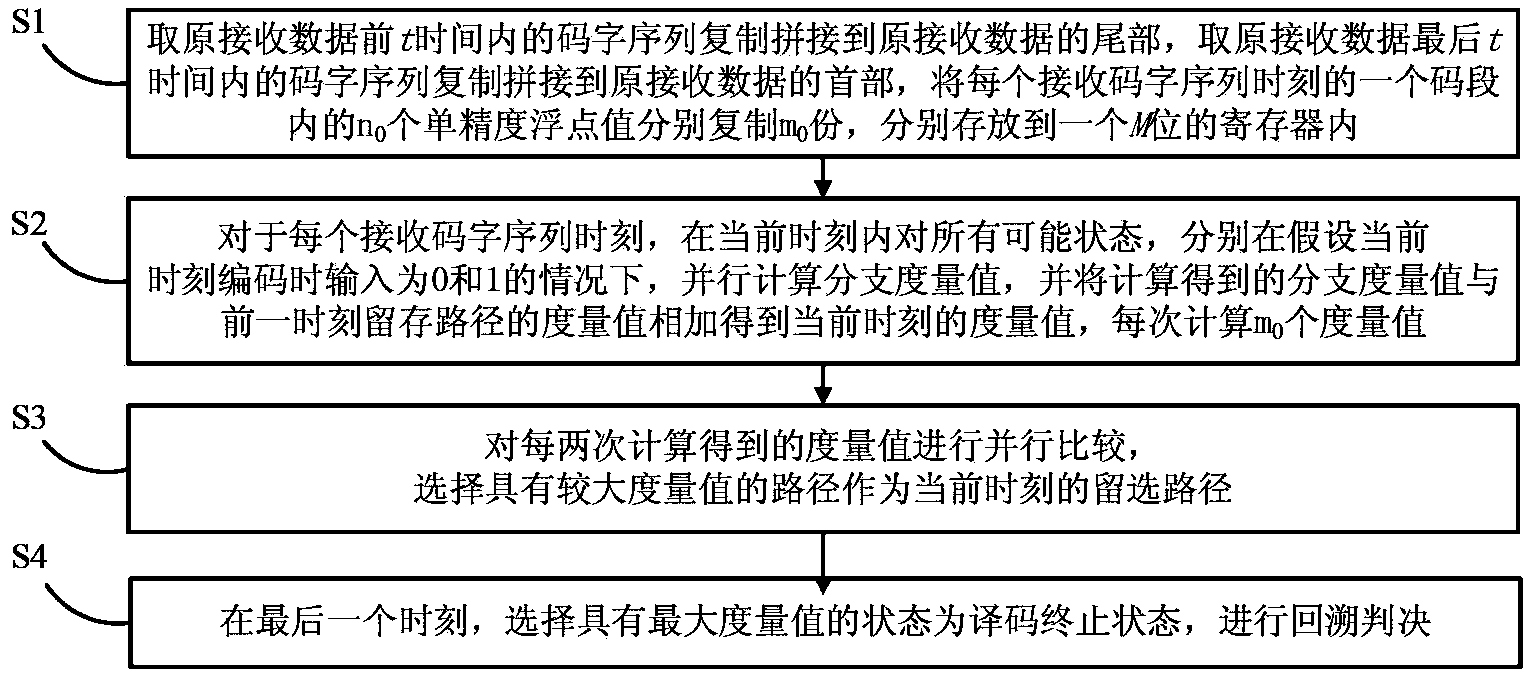Viterbi decoding method of tail-biting convolutional code based on SSE (Streaming Simd Extensions)
A tail-biting convolutional code and decoding technology, applied in the field of wireless communication, can solve problems such as low efficiency, low speed, and low real-time requirements
- Summary
- Abstract
- Description
- Claims
- Application Information
AI Technical Summary
Problems solved by technology
Method used
Image
Examples
Embodiment Construction
[0032] The SSE-based tail-biting convolutional code Viterbi decoding method proposed by the present invention is described in detail as follows in conjunction with the accompanying drawings and embodiments.
[0033] Such as figure 1 As shown, the SSE-based tail-biting convolutional code Viterbi decoding method according to an embodiment of the present invention includes steps:
[0034] S1. Take the codeword sequence copied and spliced to the tail of the original received data within t time before the original received data, take the codeword sequence copied and spliced into the head of the original received data within the last t time of the original received data, for each received codeword In sequence time, assume that the code length in a code segment at this moment is n 0 , put n 0 single-precision floating-point value to copy m 0 (m 0 Divide the number of digits of the register by the number of digits occupied by single-precision floating-point numbers), and store...
PUM
 Login to View More
Login to View More Abstract
Description
Claims
Application Information
 Login to View More
Login to View More - R&D
- Intellectual Property
- Life Sciences
- Materials
- Tech Scout
- Unparalleled Data Quality
- Higher Quality Content
- 60% Fewer Hallucinations
Browse by: Latest US Patents, China's latest patents, Technical Efficacy Thesaurus, Application Domain, Technology Topic, Popular Technical Reports.
© 2025 PatSnap. All rights reserved.Legal|Privacy policy|Modern Slavery Act Transparency Statement|Sitemap|About US| Contact US: help@patsnap.com


